NYC’s Forgotten ‘War on Christmas Trees’
Discover how an obscure holiday crackdown affects festive street vendors today!


The 19-unit Art-Deco complex that is Rockefeller Center is one of New York’s most popular tourist destinations. Every year, the center hosts the largest Christmas tree in the country, films a handful of national television’s most popular primetime talk shows, and is the site of a handful of popular television shows, including Saturday Night Live and 30 Rock. The center, completed in 1939 and named for John D. Rockefeller Jr., the son of the Standard Oil Founder John D. Rockefeller, exemplifies the crossroads of entertainment, corporate America, retail, and tourism, that is the Big Apple.
You can now step inside Rockefeller Center and learn all of its secrets on Untapped New York’s Secrets of Rockefeller Center tours!
On the tour, you will walk through a room covered in gold and escape the tourist crowds in a little-known park with an urban waterfall. After learning about Rockefeller Center‘s only demolished building, a lost Art Deco theater, you will visit two holdout buildings owned by people who never agreed to sell to Rockefeller and discover how they are being used today. As an added bonus, you will decode the meaning behind the world-famous art that covers the complex and discover the surprising story behind the world-famous Rockefeller Christmas tree. Read on to discover the top 10 secrets of Rockefeller Center!
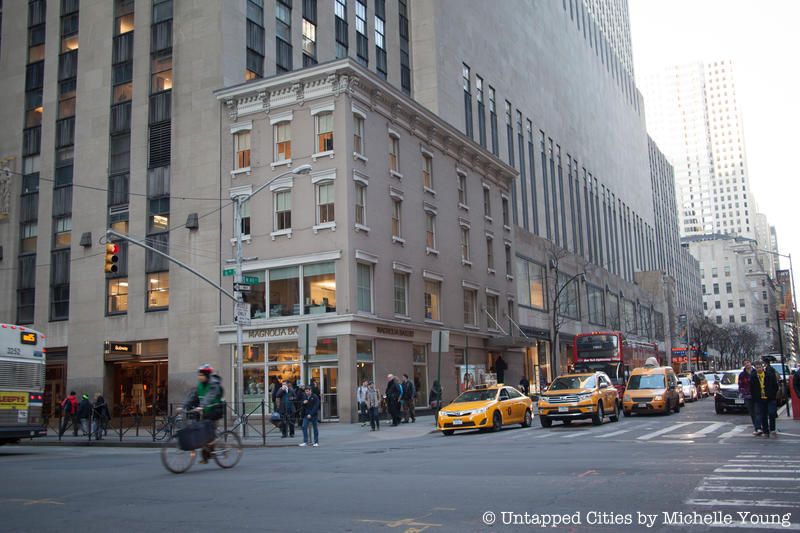
In the midst of the Great Depression, most landlords were pleased or at least amenable to Rockefeller’s offers to buy the land, except for the owners of the two townhouses on either end of 30 Rock. Forced to build above and around the two townhouses, the 70-story 30 Rockefeller Plaza building remains sandwiched between two three-and-four story structures.
A Magnolia Bakery currently occupies the former Hurley’s, a bar and saloon that opened in the 1890s and later became a famed watering hole for the media industry. The three Hurley brothers were hardly fazed by Rockefeller, asking for an absurdly high sum to underscore their refusal to leave. As one Hurley brother said, “I’ve seen sonofabitchin’ Rockefellers come and sonofabitchin’ Rockefellers go and no sonofabitchin’ Rockefeller’s gonna tear down my bar.” Less theatrical but equally firm in his refusal to leave, John Maxwell simply refused to negotiate at all, whether in seriousness or not. As such, his stout building still stands today.
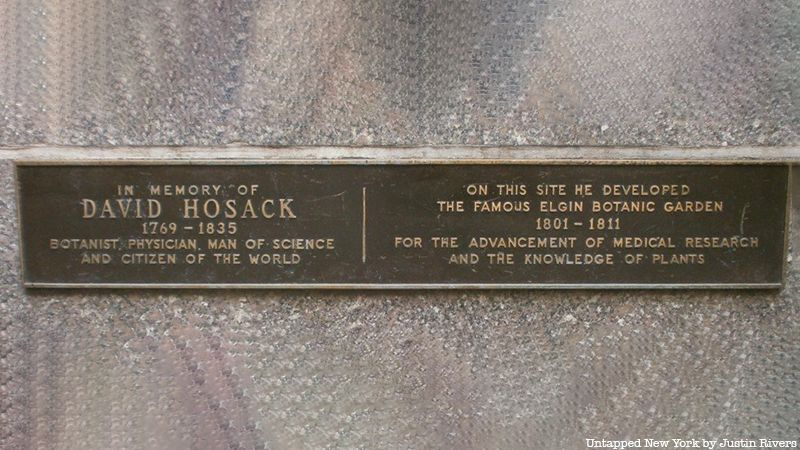
Before the site of Rockefeller Center hosted thousands of tourists and some of New York City’s most popular television stars, it was the site of the first botanical garden in the United States. Doctor David Hosack, a well-known doctor known to have aided Alexander Hamilton and Aaron Burr, also had a passion for botany. He channeled this passion into the creation of this garden, which was characterized by a wide variety of medicinal, indigenous, and exotic plants.
In addition to the plants, Hosack’s gardens, known as the Elgin Botanic Garden, included a conservatory and protective wall. These gardens were located more than three miles above city limits but were open to the public from 1801 to 1811. Eventually, Hosack sold the gardens to New York State who allowed them to undergo decay. Today, the Channel Gardens provide a reincarnation of Hosack’s beloved botanical garden.
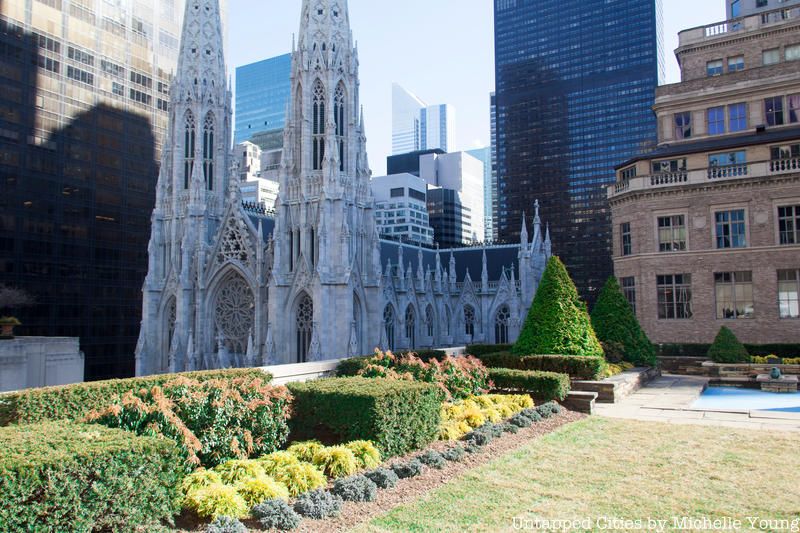
Rockefeller Center’s rooftop garden is so exclusive that tour guides are not allowed to take tenants to enjoy the view of St. Patrick’s Cathedral and more from the cultural center’s perfectly manicured rooftop. Though the original garden is rumored to have once hosted koi fish swimming in ponds, Rockefeller Center recently opened a new rooftop garden called Radio Park. Both parks now exist, with one on top of Radio City Music Hall and another located at 620 Loft and Gallery, part of 620 5th Avenue.
Accessible only to Rockefeller Center employees, tenants, and their guests, Radio Park stretches half an acre and boasts views of the city stretching above Rockefeller Plaza. The creators of the garden hope that it serves as a space where employees of different companies based in Rockefeller Center can meet to socialize, destress, and enjoy a variety of “garden rooms,” which host different natural environments.
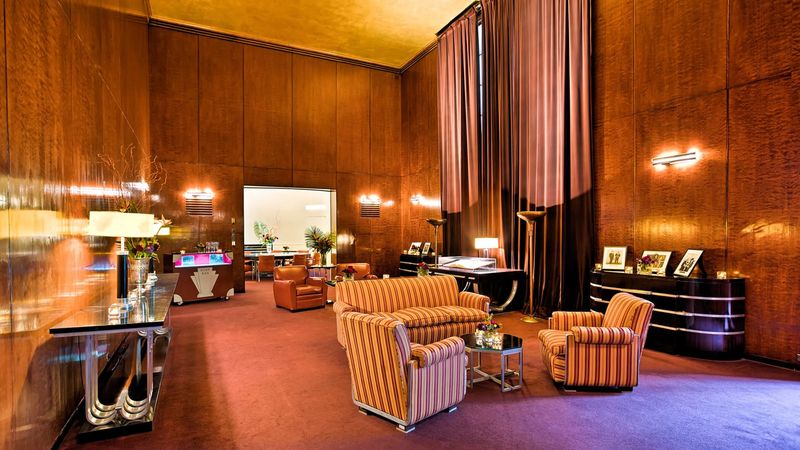
Aside from hosting the Christmas Spectacular, featuring the Rockefeller Center Rockettes, since 1933, Radio City Music Hall was originally a high-class entertainment venue, conceived to put Rockefeller Center on the map. Nestled within the “showplace of the nation,” a hidden apartment within the venue is now a spot used to entertain A-List guests.
The architect of Radio City Music Hall, Edward Durrell Stone, and its interior designer Donald Deskey, originally built the apartment inside Radio City for famous entertainer Samuel “Roxy” Rothafel. With the same Art Deco design, the apartment was the perfect place to entertain the greats of Hollywood’s golden era, such as Alfred Hitchcock, Samuel Goldwyn, and Olivia de Havilland. As reported by Atlas Obscura, the “20 foot high ceilings covered in gold leaf, and walls decorated floor to ceiling with plush drapes.” It is reportedly still in pristine condition.
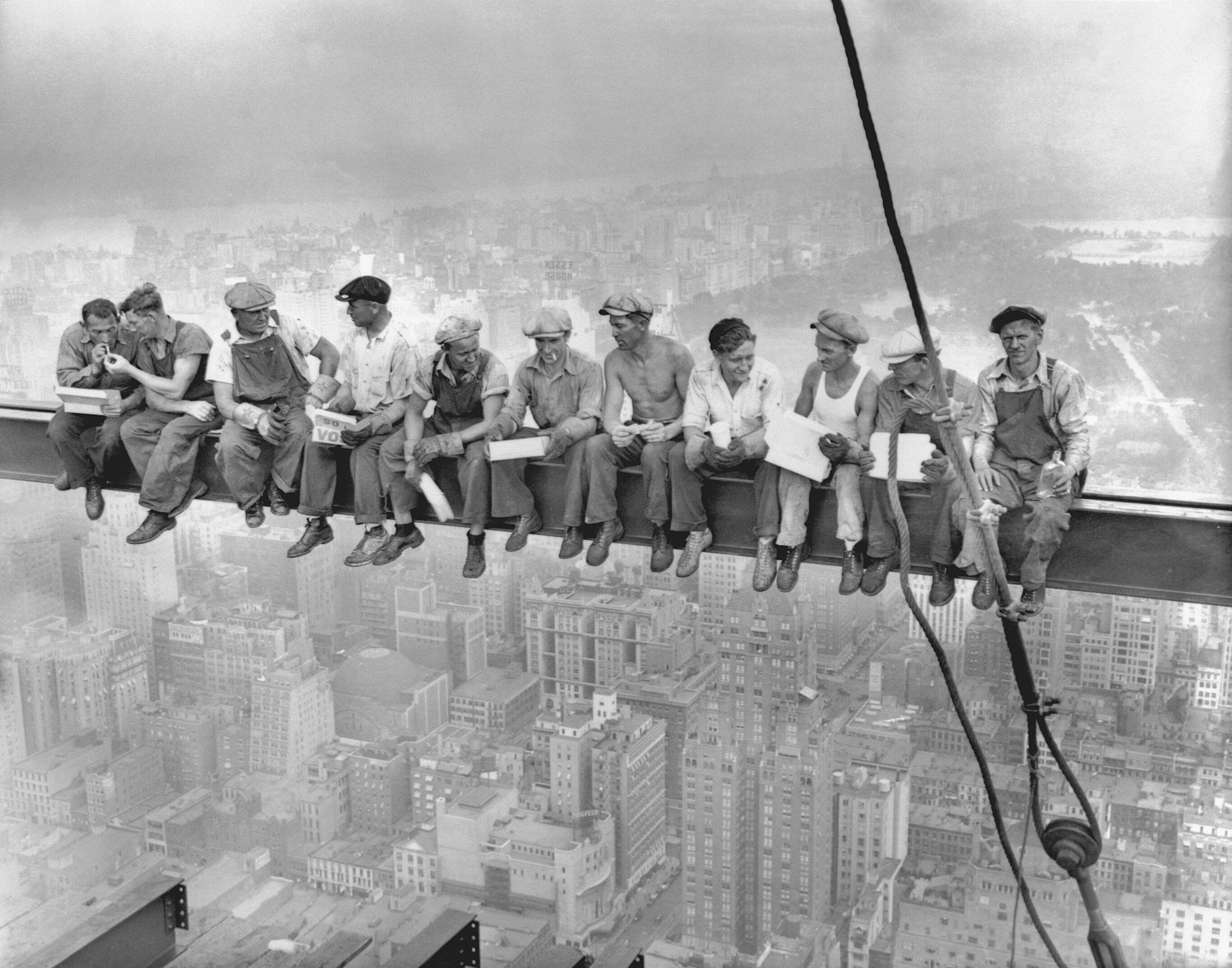
This photograph has been copied and parodied hundreds of times throughout history, so often that it stands among the ranks of Salvadore Dali’s ‘Persistence of Memory’ and the stern-faced, pitchfork-wielding couple of ‘American Gothic.’ This photograph, ‘Lunch Atop a Skyscraper,’ was taken in 1932 on the 69th floor of the RCA building, now the GE Building, otherwise known as 30 Rock.
Though it is believed, through archival records, that the men pictured were real construction workers, the photo was in fact staged by Rockefeller Center and published in The New York Herald Tribune to promote the new skyscraper. Nevertheless, the photo has lived on as a testament to the sweat sacrificed for New York City’s skyline.
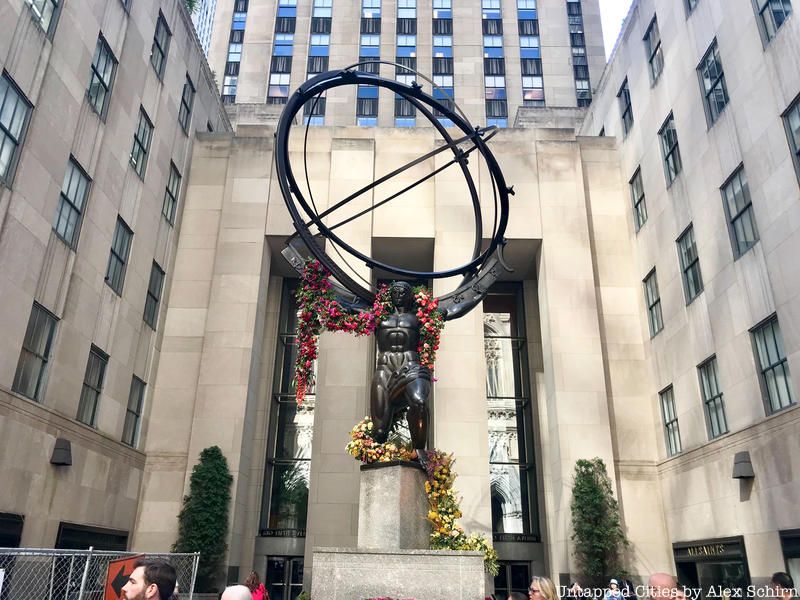
Preceding World War II, Rockefeller Center’s International Building North was fated to become occupied by German companies with plans to rename the building the Deutsches Haus. However, as German aggression increased under the rule of Adolf Hitler, John D. Rockefeller Jr. would not allow that ownership to occur. As such, British Intelligence set up their base of operations in that building throughout World War II.
Beginning with Hitler’s occupation of Poland, the British intelligence center handled top-secret information in New York City years before the United States entered the war. The building’s room 3603 was additionally used as the headquarters of Allied Intelligence and functioned as the office of Allen Welsh Dulles, who would become the civilian director of the yet-to-be-formed Central Intelligence Agency.
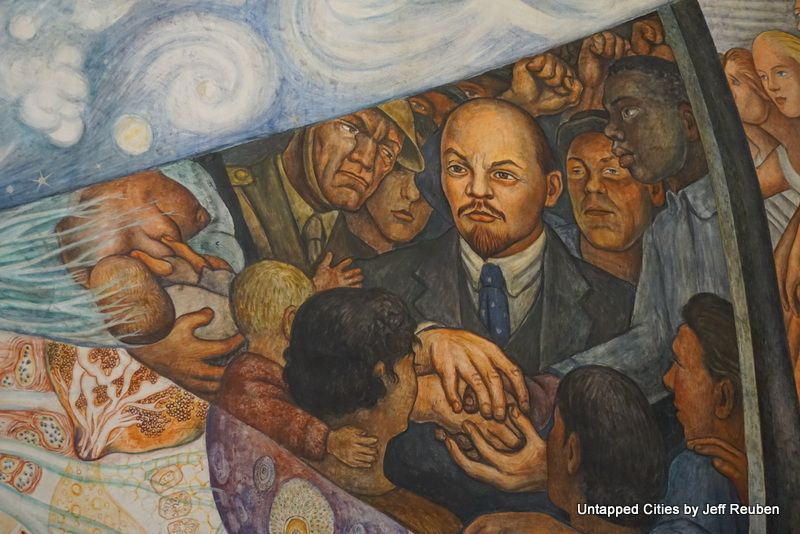
Rockefeller Center contains many pieces of art, from the iconic Prometheus and Atlas statues to the murals all around 30 Rock. However, one commission by the socialist artist Diego Rivera, then financed by Rockefeller’s wife, was taken down shortly after being installed in the lobby of the GE Building due to accusations that it contained Communist imagery.
Diego’s color fresco, dubbed Man at the Crossroads, was said to contain an image of Vladimir Lenin and a Soviet Russian May Day Parade. Nelson Rockefeller, John Jr.’s son, having wanted either Henri Matisse or Pablo Picasso to design the lobby of the GE Building, lobbied to have the mural destroyed before it was finished, despite protests from artists trying to get it moved to the nearby Museum of Modern Art. The mural was ultimately destroyed.
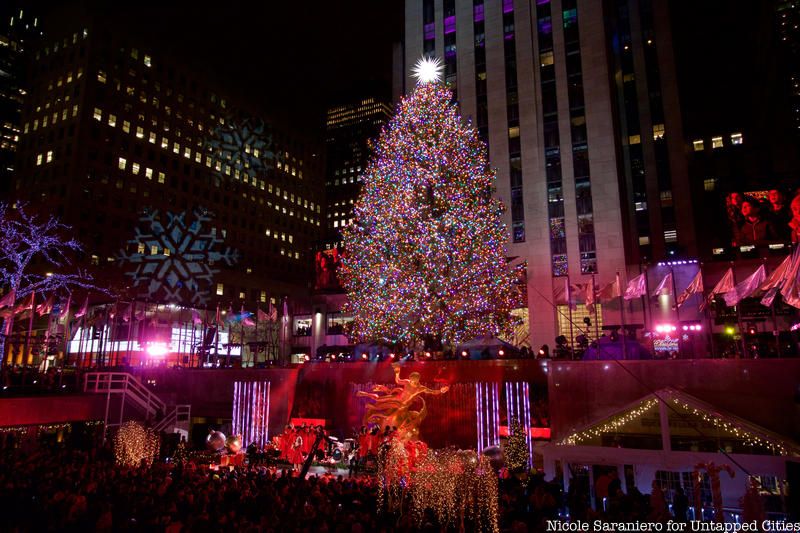
The iconic Rockefeller Center Christmas Tree is as much a staple of a new York Christmas as the Rockettes or the Christmas Spectacular. While the first tree, erected in 1933, was only about 20 ft tall, today, the tree can be anywhere from 60 to 100 ft. The tree now stands for much longer — up to a month before Christmas — compared to the first tree, which Rockefeller Center erected on Christmas Eve.
Today, officials embark on a helicopter tour of upstate New York, New Jersey, Vermont, Ohio, and Pennsylvania to find the perfect tree. Delivered to Rockefeller in the middle of the night, the tree is decorated with thousands of LED lights before being hoisted to the center of 30 Rockefeller Plaza. If plugged in end to end, the lights on the Rockefeller Center tree would stretch 5 miles, which is about the distance from 110th Street to 14th Street along Broadway. To add to the feat, the Swarovski star at the top weighs 550 pounds, and the tree does not require water for the entire month because its enormous size can retain enough water to keep it alive.

Rockefeller Center’s Channel Gardens, otherwise known as the Promenade at Rockefeller Center, are arguably one of the most recognizable aspects of John D. Rockefeller’s “grandest plaza in all of New York.” Stretching from Fifth Avenue to 30 Rock, the gardens have hosted a slew of themed installations, from a Victory Garden during World War II to a warm-weather spectacle filled with tropical plants. Today, the Channel Gardens host a children-centric installation filled with Derrick Adam’s Funtime Unicorns. His installation includes a herd of ridable unicorns mounted on springs that children can admire and mount.
Although thousands enjoy the Channel Gardens’ installations each year, few know the origins of the promenade’s name. Since the Channel Gardens separate the British Empire Building and the Maison Française, it acts similarly to the English Channel. It is from its function that the Channel Gardens gets its name.
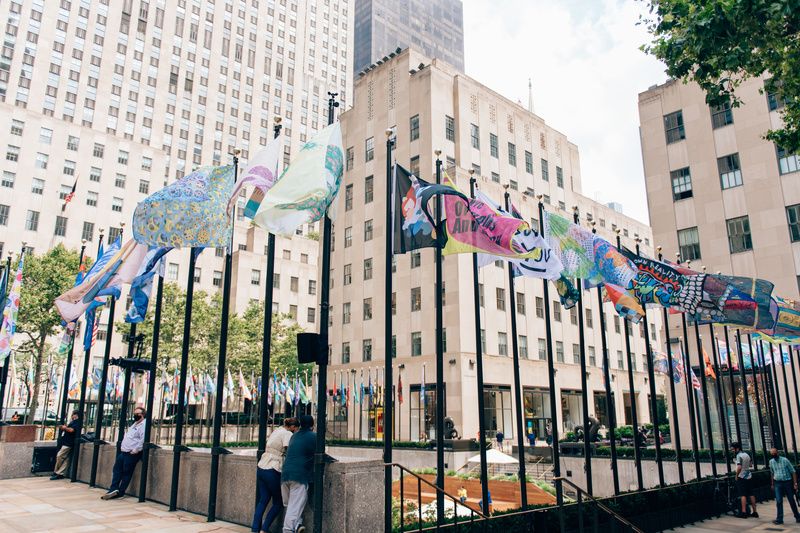
Rockefeller Center tour guides are immortalized by Kenneth Parcell, the beloved page in Tina Fey’s hit sitcom 30 Rock. Pages like Kenneth have guided tourists and natives alike through NBC studios in the GE Building for almost 80 years. But the pages were not always men.
During World War II, the draft stripped Rockefeller Center of the majority of its trusted tour guides. However, the demand for tours did not go away. In fact, they were an escape from the grim reality much of the world faced during that time period. As a result, Rockefeller Center turned to women to fill in. Bringing guests through Rockefeller’s “city within a city,” these women provided solace in a time of sadness.
Next, read about the Top 8 secrets of the Atlas and Prometheus Sculptures at Rockefeller and the hidden silver model airplane made by Cartier! Get in touch with the author @jinwoochong.
Subscribe to our newsletter